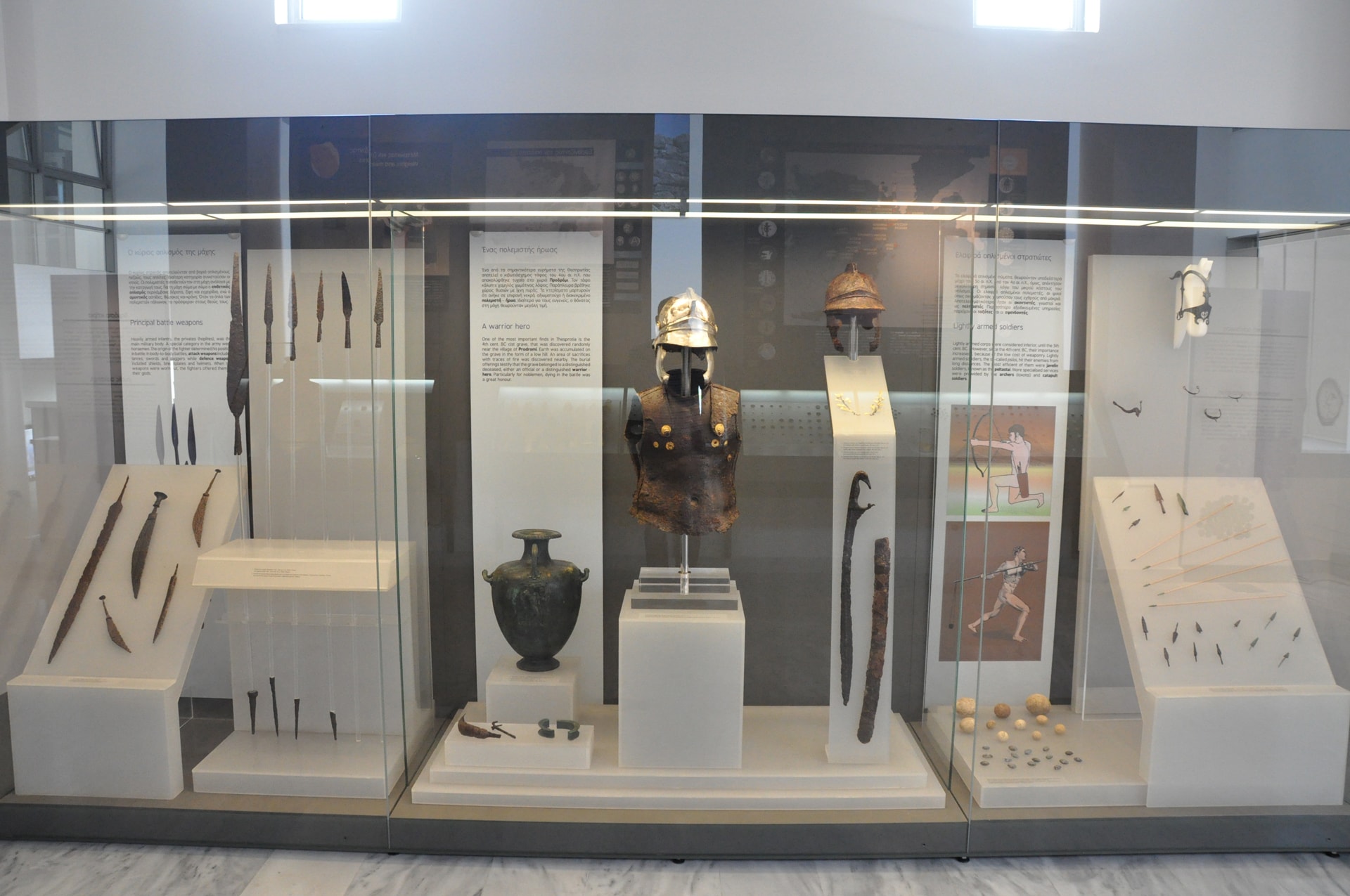The cist-shaped tomb at Prodromi, Thesprotia
The cist-shaped tomb discovered in 1978 by chance in the village of Prodromi Paramythia, in Thesprotia, hid impressive finds. A cuirass of iron with gold decorative fittings and shaped to the body, two helmets, one of which was silver-plated, a sword with a bird-shaped handle and its scabbard, an iron key and a strigil accompanied their warrior owner on his last journey. The cremated remains of the deceased were placed in a bronze ash-urn (a hydria) which was decorated with a Dionysian scene. The grave was covered by a low mound. An area with traces of fire was found next to the burial, where posthumous honours were probably paid to the deceased. The weapons and the bronze hydria place the dating of the tomb in the last decades of the 4th or the beginning of the 3rd centuries BC. The luxury of the armour and the type of sword testify that the tomb must have belonged to a distinguished warrior, a high official of the cavalry corps.
The tomb of Prodromi is the only case known to date in Epirus where the deceased was buried with his full panoply. We have similar examples, but mainly from Macedonia. Iron cuirasses have been found in a few tombs, such as tomb II of Philip II and tomb III in the Great Toumba at Aigai, the Macedonian tomb III in Agios Athanasios in Thessaloniki and the tombs of Derveni, while there are also numerous iron helmets found in Macedonian tombs.
